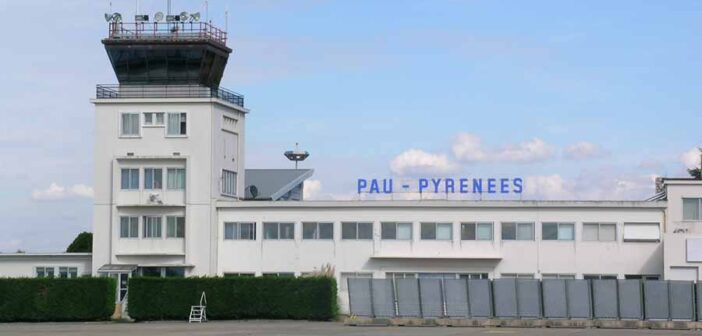Pau-Pyrénées Airport, located 10 kilometres northwest of Pau in Uzein, offers a compact and efficient travel hub for those exploring the Pyrénées-Atlantiques region or connecting to major French cities. Serving around 600,000 passengers annually, this medium-sized airport is known for its quick processing times and practical amenities, making it a convenient choice for leisure and business travellers alike.
Accessing the airport is straightforward with several transport options. The Ligne 17 bus, operated by Idelis, connects the airport to Pau’s town centre in approximately 30 minutes, running hourly from 6:47 AM to 11:00 PM between July and August, and from 6:07 AM to 9:09 PM otherwise, with tickets costing €1.30, purchasable from the driver.
Taxis are available outside the terminal, with fares to central Pau averaging €20–€30, though booking is advised on weekends or holidays due to limited availability. Drivers can use the A64 motorway, with short- and long-term parking options available, including secure lots for extended stays. A new shuttle service to nearby ski resorts is planned for winter, enhancing regional connectivity.
The airport’s single terminal is designed for ease of navigation, featuring 10 check-in desks, three boarding gates, and two baggage claim belts. Its modest 2,500-square-metre layout ensures quick movement from check-in to boarding, typically taking under 30 minutes. Clear signage and a central information desk assist passengers, though summer months can see queues at check-in and security due to increased holiday travel. Arriving two hours early for domestic flights and three hours for international ones is recommended to account for peak-period congestion.
Dining and retail options are modest but sufficient for a smaller airport. A café and snack bar in the public area serve coffee, pastries, and light meals, while a restaurant in the departures zone offers French cuisine and regional specialities like garbure soup. Duty-free shopping is limited but includes essentials like snacks, newspapers, and local souvenirs such as Béarnais wines. A small newsstand provides reading materials and travel necessities, ensuring passengers have basic needs met before flights.
Facilities cater well to passenger comfort. Free Wi-Fi is available throughout the terminal via the “PUF-WIFI” network, and charging points are located near seating areas. A lounge is accessible for a fee, offering a quiet space with snacks and drinks. Passengers with reduced mobility benefit from wheelchair assistance, adapted restrooms, and priority lanes, provided arrangements are made with airlines 48 hours in advance. Families can use a baby-changing room, and a lost-and-found counter assists with misplaced items. ATMs and a currency exchange are available, though luggage storage is not offered on-site, with alternatives at Pau’s train station.
On-time performance is generally reliable, with Air France operating the majority of flights, particularly to Paris–Charles de Gaulle, averaging 21 weekly departures. Other carriers like Chalair, Amelia, and Twin Jet serve destinations such as Brest, Kerry, and Ajaccio. Real-time flight updates are accessible via Flightradar24 or the airport’s website, helping travellers stay informed. The airport’s small size reduces ground delays, though peak summer periods can strain capacity.
Connections at Pau-Pyrénées are limited, as it primarily serves point-to-point routes rather than acting as a transfer hub. Passengers connecting through Paris–Charles de Gaulle or Orly can coordinate with Air France for single-ticket transfers, with baggage typically handled automatically. Minimum connection times in Paris are around 60 minutes, but separate-ticket travellers should allow extra time for reclaiming luggage and re-checking in. The airport’s compact layout ensures quick gate access for outbound flights.
Potential delays may arise during peak summer or holiday periods due to higher passenger volumes, which can overwhelm check-in and security. Technical issues with smaller aircraft operated by regional carriers like Chalair can also cause disruptions, as can occasional staffing shortages. Weather in the Pyrénées region rarely impacts flights, but fog or strong winds in winter may lead to minor delays. Travellers have reported inconsistent staff responsiveness during disruptions, so checking flight status via airline apps or the airport’s website is advisable.
Pau-Pyrénées Airport offers a practical and welcoming experience for travellers. Its small size, efficient layout, and accessible transport links make it an ideal gateway to the Pyrénées region, ensuring a smooth start or end to any journey. By arriving early and planning transport in advance, passengers can make the most of this regional hub’s offerings.




